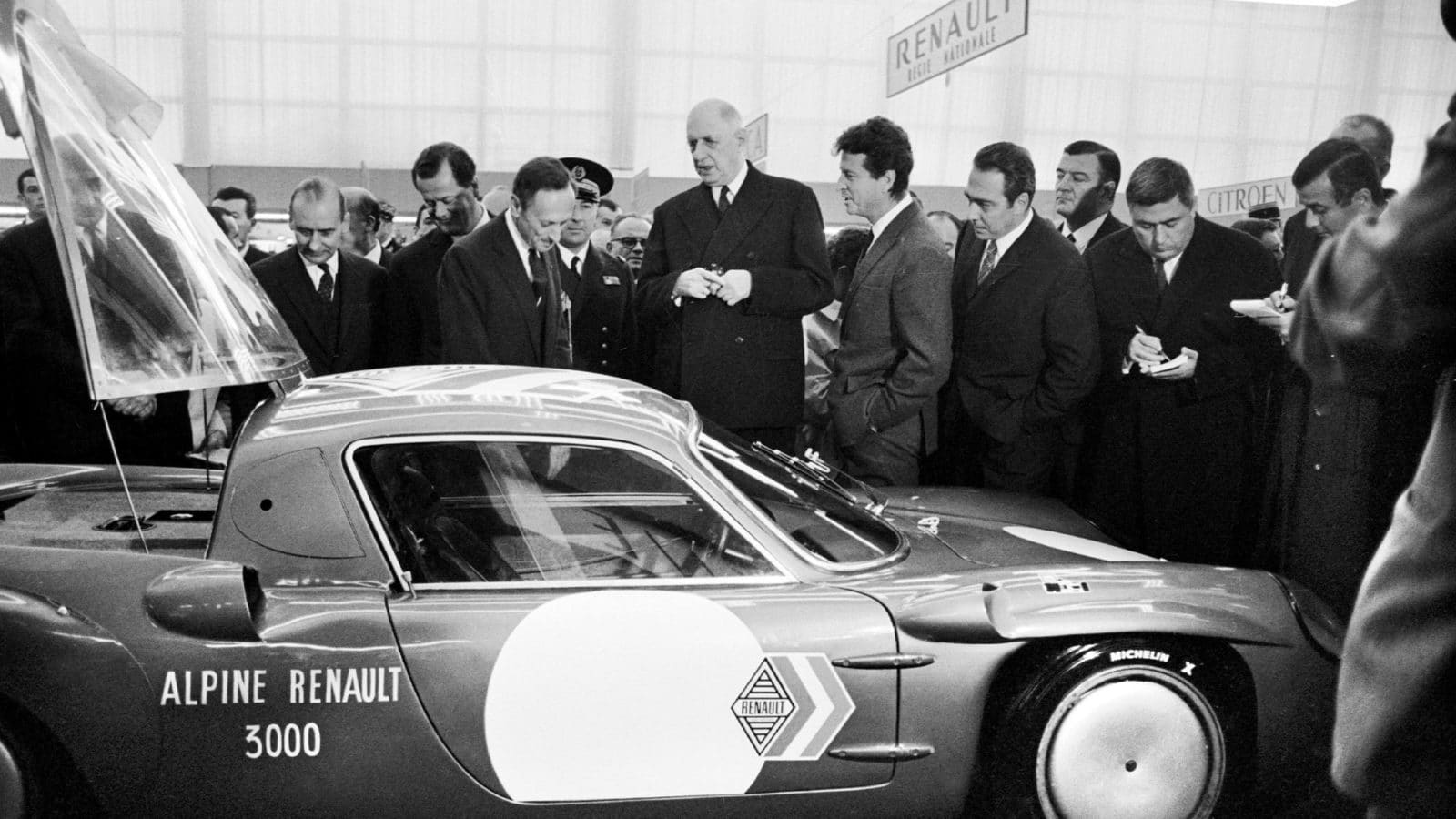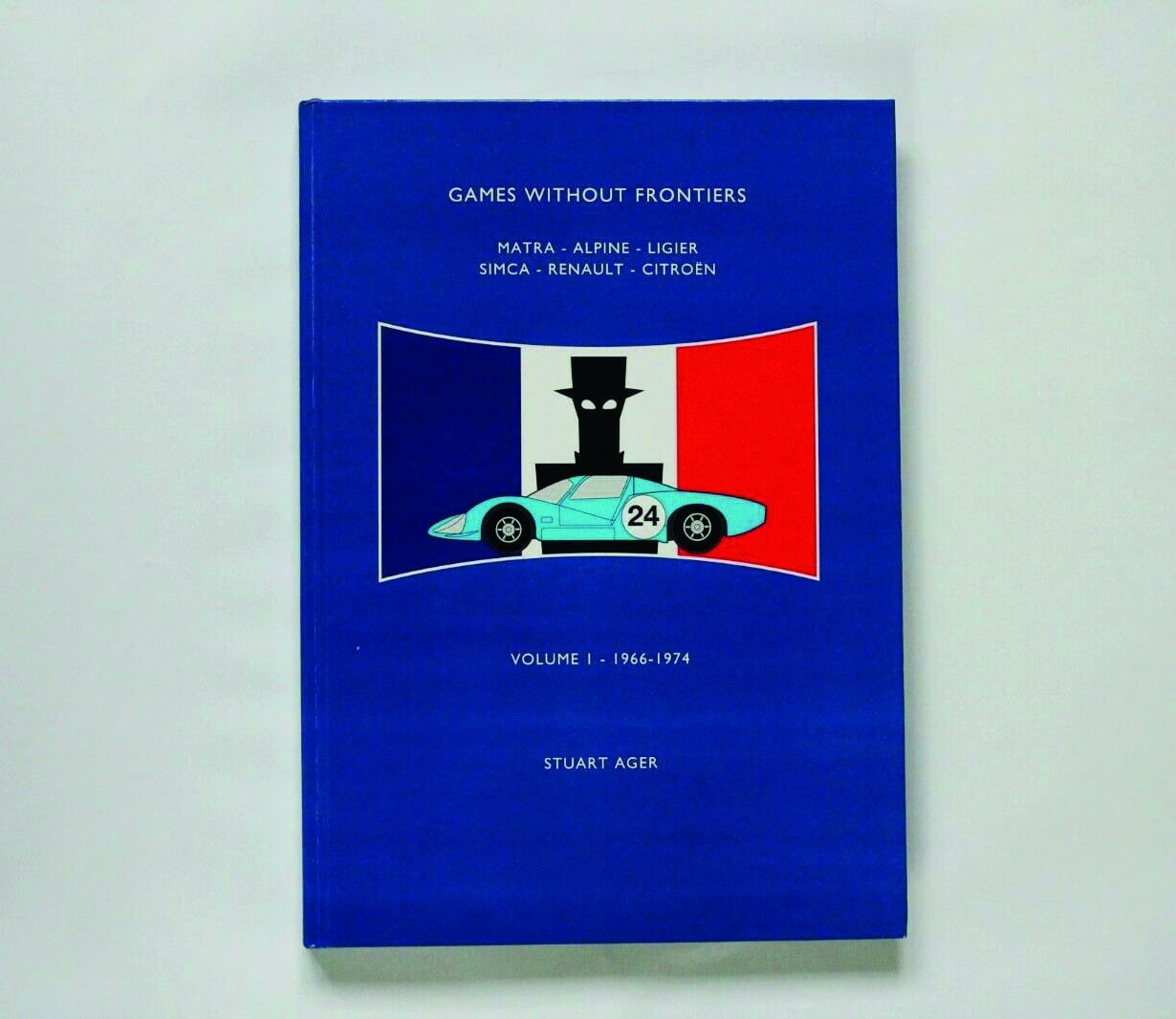Games Without Frontiers book review
The French rise to motor racing prominence had its roots with Charles de Gaulle, who realised that track success led to big sales: a story told in Games Without Frontiers

Le Général played catch-up with British, German and Italian car-makers in the 1950s and ’60s
Getty Images
Anybody with an interest in vintage chart music will know that this glossy, 258-page book about France’s ruthless march into motor racing from 1966-74 shares its title with Peter Gabriel’s first UK Top 10 single. And if you’re thinking, “Well, Games Without Frontiers was 1980 – it’s the wrong time period!”, you’re right. But let us explain.
Although Gabriel was commenting on Cold War politics, Games Without Frontiers is a translation of Jeux sans Frontières, which was the Europe-wide Olympics-with-custard-pies TV show where competing regions would dress in oversized outfits, often as clowns or bakers, to win comedic races. We know the format as It’s a Knockout but Jeux sans Frontières was a French show dating back to 1962 – the idea, it is said, of president Charles de Gaulle, who is central to Stuart Ager’s book concept.
“Win on Sunday and the world buys on Monday” is a repeated mantra in de Gaulle’s plan of French betterment but as Ager reveals, getting the likes of Matra, Alpine, Ligier, Renault and Citroën into competition was at times a murky affair – a murk that Ager has painstakingly poked his nose into.
Within bite-sized chapters that never fail to enthral, we are led through the political drama behind the scenes as France strove to lead the world through tech innovation, while, of course, also hoping to give the British a good sock on the jaw. Motor sport would play a critical role: “Le Général expected his country to do whatever was necessary, to win at all costs,” we’re told. So serious were its Formula 1 schemes for title glory that Matra in 1970 employed 120 personnel – “greater resources at its disposal than any of its competitors”.
Ager refers to what occurred as a cross between The French Connection, Dr Strangelove and The Wicker Man, a tale of skulduggery and formidable engineering that is whipped along by Ager’s opinionated commentary, and backed by a series of lively illustrations, many of which are drawn in watercolour. “Oh dear… an Alpine A220 overheats, Le Mans, 1969” a caption reads as smoke billows from the car. A speech bubble appears from the cockpit – “!”.
“For those playing, Games Without Frontiers was not for the faint-hearted,” states Ager, but if you have a leaning towards dark humour, you’ll like this book. And apparently, another instalment is to follow.
 |
Games Without Frontiers Stuart Ager Andrew Brodie Engineering, £39.99 |
July 2022 book reviews in brief
Strictly no Admittance – Lightweight E-type and XK engine
Peter D Wilson
There’s no one better than an insider to relay a story, and Wilson worked in Jaguar’s competitions department while the legendary Lightweight was developed and was a consultant on the reconstruction of 4868 WK. Using his knowledge, deep archive trawls and many conversations with others involved he’s collected a seriously detailed history of turning a road-going GT into a competitive racer. Dense with internal memos, reports and photographs, it’s tech-heavy but to an outsider like me it feels like the last word. It’s what you’d call a committed read due to the huge amount of information but there are things to learn, such as that Peter Lindner’s driving style involved shifting round the cockpit which meant he didn’t like a harness – which might have saved him in his terrible crash. Another is that if they hadn’t had to keep fixing crashed private Lightweights they might have been able to develop the E to beat those pesky GTOs… GC
PJ Publishing, £95
ISBN 9781908658210
Shelby Cobras
Robert D Walker
This is a hefty two-volume boxed work on those noisy snakes and how they came into being, comprising chassis by chassis histories of all the Mark I cars. It’s a 1000-page avalanche of information illustrated with 1500 photos, including one machine new to me – the 1964 Cougar II concept which looked like it deserved pedigree underpinnings rather than a pushrod engine and leaf springs. Walker spoke to hundreds of people compiling this (I didn’t count them) and pleasingly gives due credit to the craftsman at AC cars in England who provided the basis for the Cobra, a fact often sidelined in US history. If you need to know about spelling variations on Cobra heater labels, it’s all in here. GC
Dalton Watson, £185
ISBN 9781854433114
